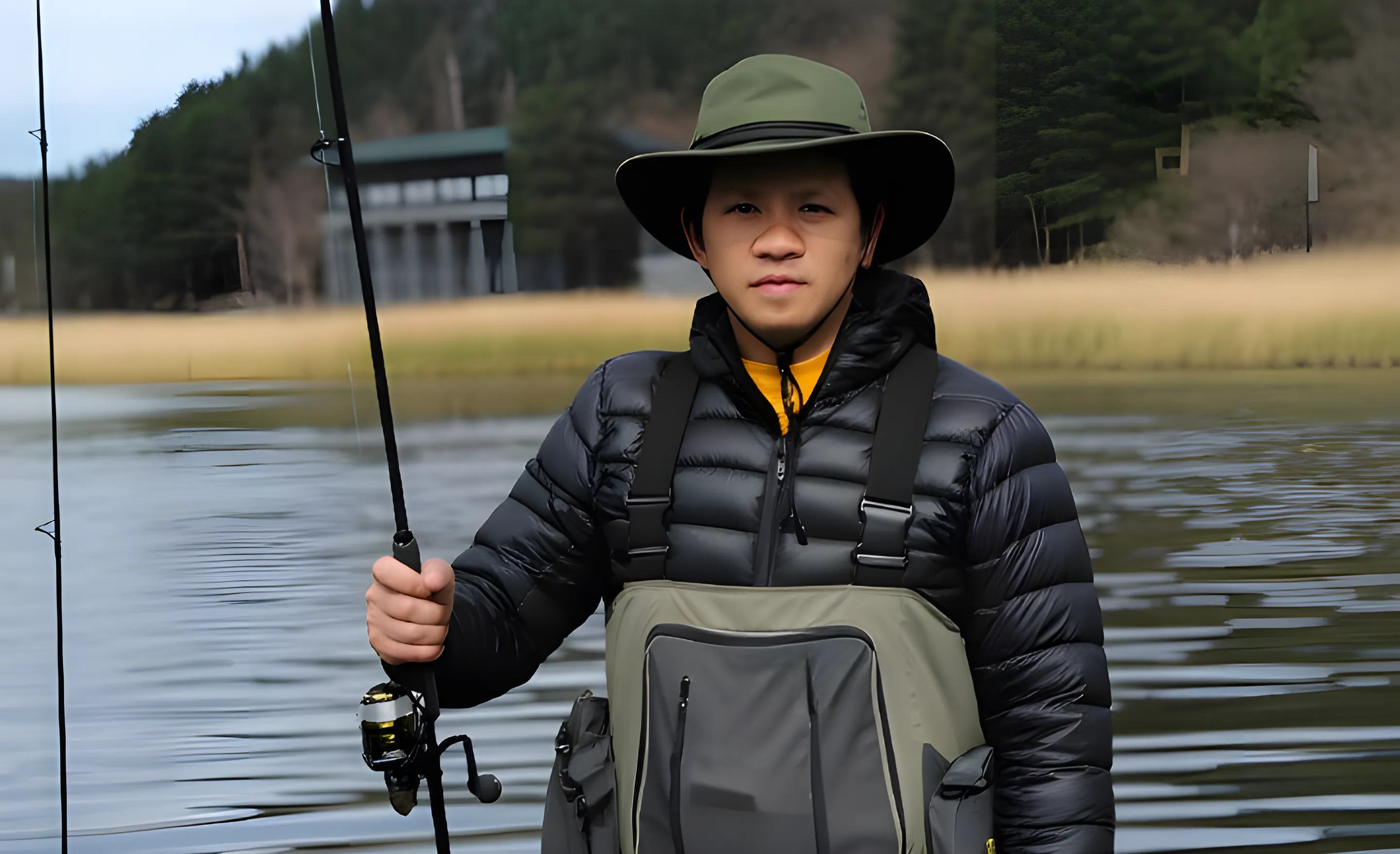How to Fish for Smallmouth Bass: Expert Tips and Techniques for 2025
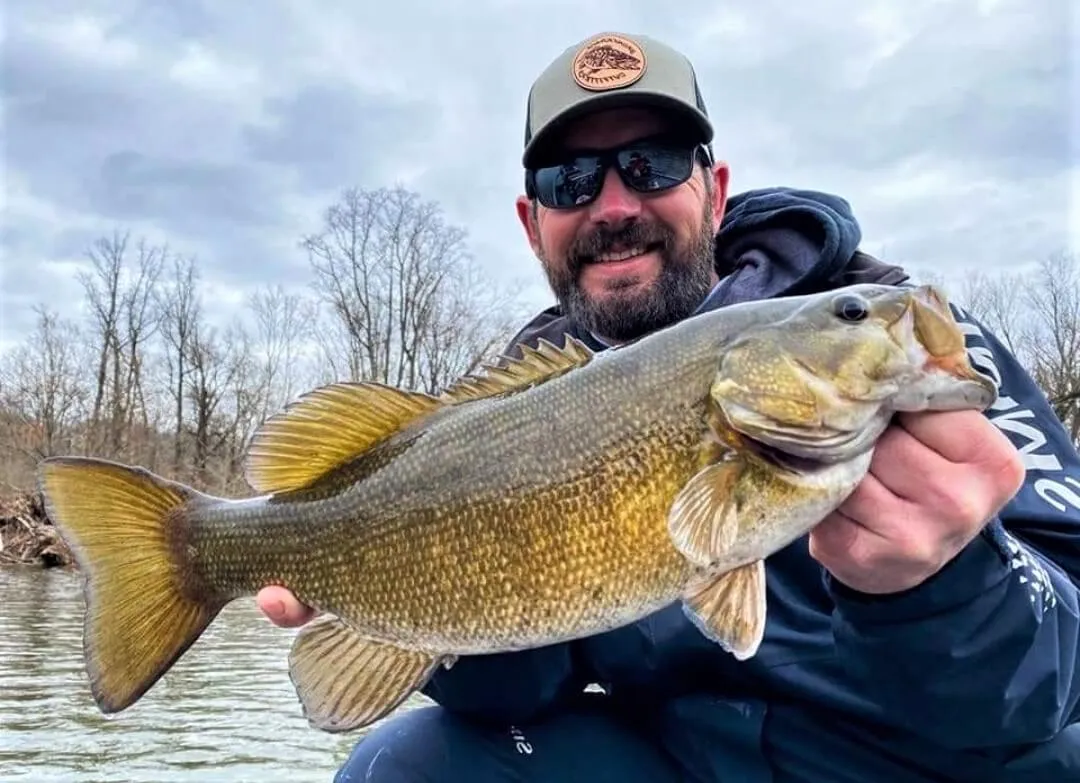
The thrill of a smallmouth bass smashing your lure is a feeling every angler cherishes. These bronze fighters are pound-for-pound one of the hardest-fighting freshwater fish, but catching them consistently requires more than just luck. It requires understanding their world. Here at riversiderelics.com, we believe that sharing hard-won knowledge is the best way to honor the sport. In this guide, I’ll distill everything I’ve learned over 20 years into a complete masterclass on how to fish for smallmouth bass, so you can spend less time searching and more time feeling that incredible tug on your line.
Key Takeaways
Habitat: Look for clear, cool water with rocky bottoms, ledges, or current breaks.
Essential Gear: A 7-foot, medium to medium-heavy spinning rod paired with a quality reel and 6-10 lb fluorocarbon line.
Go-To Lures: Stock your tackle box with tube baits, crawfish imitations, jerkbaits, and some topwater poppers.
Top Technique: When in doubt, a drop-shot rig presented vertically over a rocky structure is deadly.
Prime Seasons: Spring and Fall offer the most aggressive feeding windows in shallower water.
Unlocking Smallmouth Habitat and Behavior
Success starts with thinking like a fish. While there are many different type of bass, each with unique habits, smallmouths are in a class of their own when it comes to their love for rocks and current. Their habits are dictated by their environment and their next meal.
Habitat: The Three C's
Remember these three C's: Clear, Cool, and Cover (Rocky). Smallmouth thrive in water with good visibility and cooler temperatures, typically most active between and (). Most importantly, they are structure-oriented fish. They relate to rock like nothing else.
-
Lakes & Reservoirs: Target rocky points, submerged rock piles, and bluff walls.
-
Rivers & Streams: Focus on current seams, eddies behind large boulders, and deeper pools with rocky bottoms.
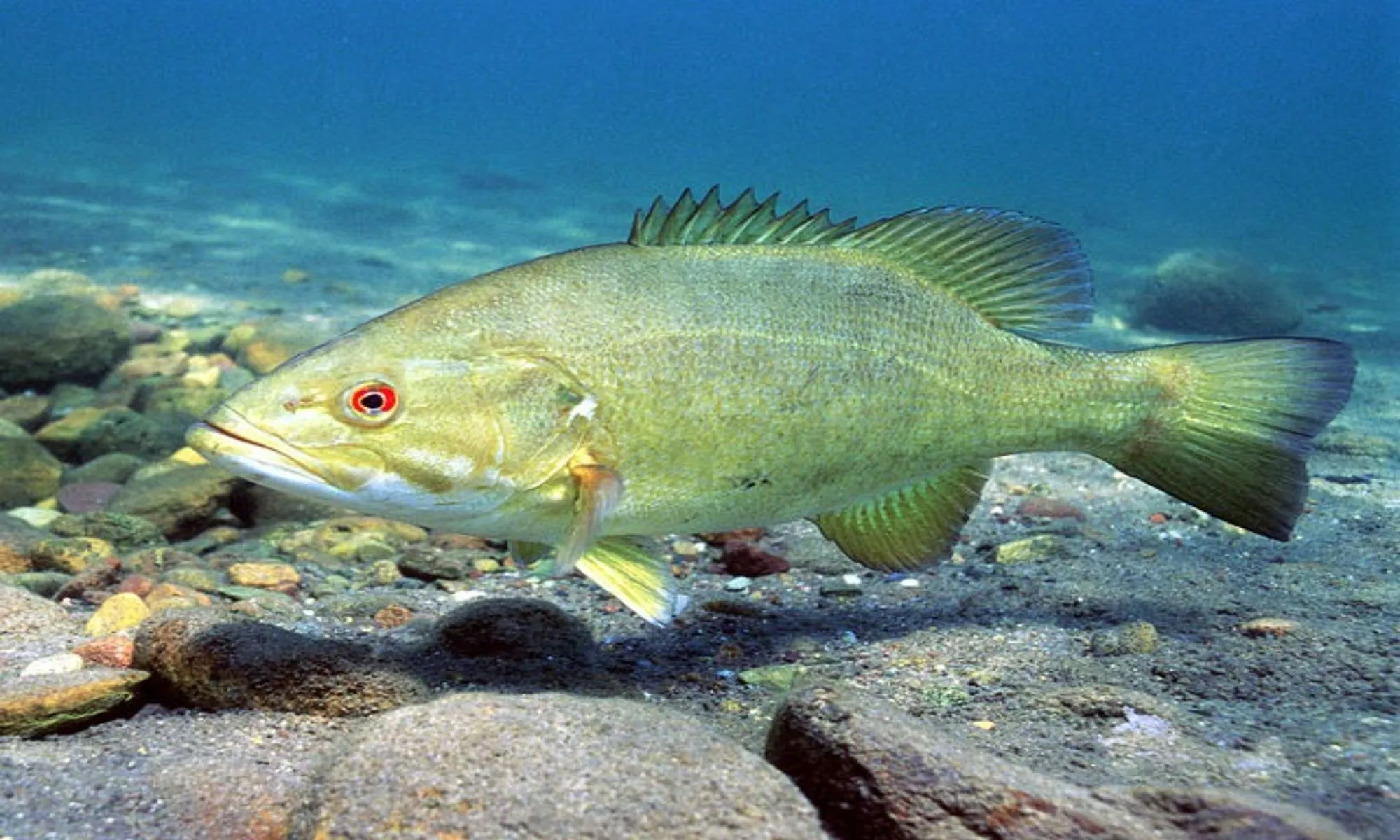
Diet: What's on the Menu?
Smallmouth are opportunistic predators. Their primary food sources are:
-
Crayfish: Their absolute favorite meal. This is why lures that imitate crayfish are so effective.
-
Baitfish: Minnows, shad, and perch are common targets.
-
Insects: Especially during hatches, they will feed on mayflies, dragonflies, and hellgrammites.
Your lure choice should always try to "match the hatch" by imitating these primary food sources.
Gearing Up: Your Essential Smallmouth Toolkit
Having the right equipment makes a world of difference. It’s not about having the most expensive gear, but the right gear for the job.
| Gear | Recommendation | Why It Works |
| Rod | 7' Medium to Medium-Heavy, Fast Action Spinning Rod | Offers excellent casting distance, sensitivity to feel subtle bites, and the backbone to fight a strong fish. |
| Reel | 2500 or 3000-size Spinning Reel | A quality reel with a smooth drag system is crucial for handling the powerful, sudden runs of a smallmouth. |
| Line | 6-10 lb Test Fluorocarbon Line | Fluorocarbon is nearly invisible underwater, highly sensitive, and abrasion-resistant, which is perfect for rocky environments. |
| Lures | A "starter pack" should include: Tube baits (green pumpkin), Football Jigs (brown/orange), Jerkbaits (shad color), Topwater Poppers (clear/bone). | A "starter pack" should include: Tube baits (green pumpkin), Football Jigs (brown/orange), Jerkbaits (shad color), Topwater Poppers (clear/bone). |
| Tackle Bag | A well-organized bag or box | Keeps you efficient on the water, allowing you to switch lures quickly as conditions change. Don't forget hooks, weights, and swivels! |
Top Techniques for Catching Smallmouth Bass
Here are the four most effective techniques that have consistently put fish in my boat. While we'll cover which lures work for each specific technique below, you can see our complete, ranked list in this definitive guide to the best fishing lures for smallmouth bass. We've integrated the top choices for each method right here.
1. Drop-Shotting
This is my number one technique, especially when bass are deep or finicky. It presents the bait naturally suspended just off the bottom.
-
How it Works: The weight is at the bottom of the line, with the hook and bait tied 12-24 inches above it. This allows the lure to hover enticingly in the strike zone.
-
Best Baits: 3-4 inch soft plastics like finesse worms, minnow imitations, or small flukes.
-
When to Use: Ideal for summer and winter when bass are in deeper water, or anytime you are marking fish on your electronics that won't bite a moving bait.
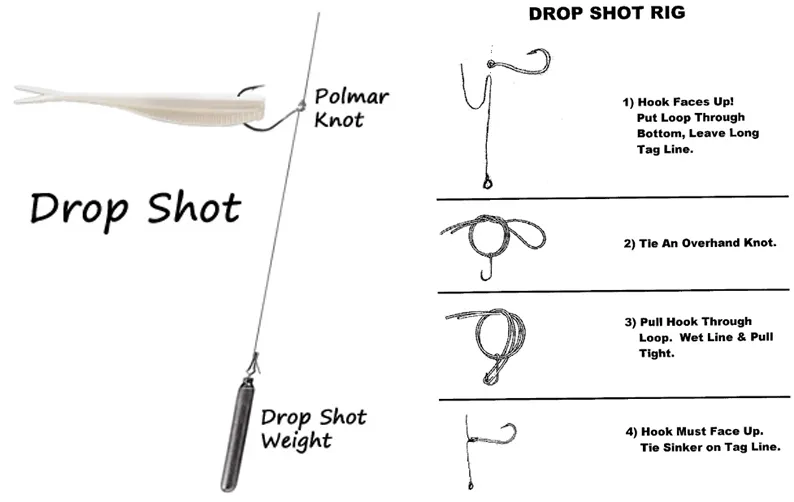
2. Jigging
This technique perfectly imitates a crayfish, their favorite food.
-
How it Works: Cast a football jig or swim jig and let it sink to the bottom. Use a slow retrieve with short hops and long pauses, making the jig look like a scurrying crayfish.
-
Best Baits: Football jigs (1/4 to 1/2 oz) in brown, green, or orange, often with a soft plastic crawfish trailer for more action.
-
When to Use: All year round, but especially effective along rocky bottoms, ledges, and drop-offs.
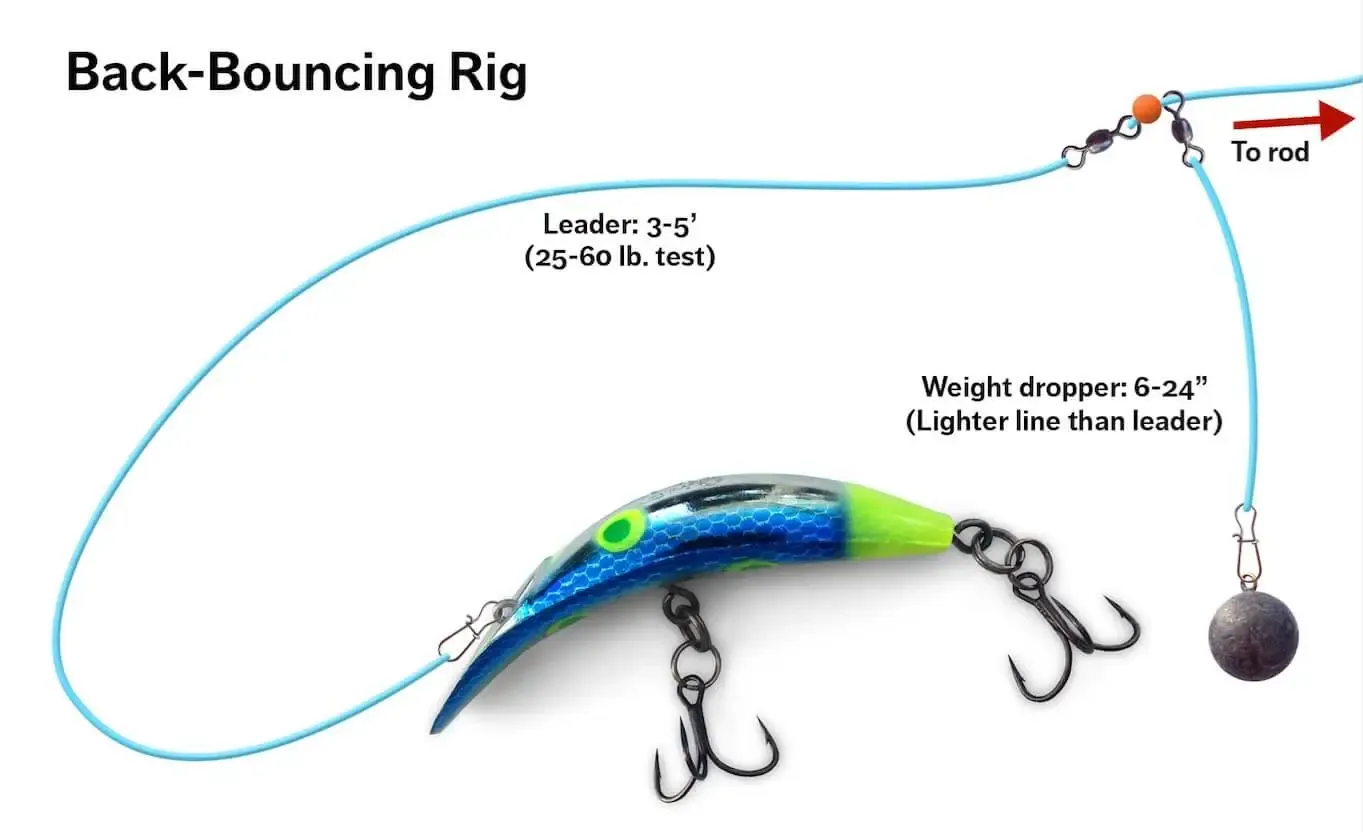
3. Crankbaits & Jerkbaits
When you need to search a large area, these reaction baits are your best friend.
-
How it Works: Crankbaits dive to a specific depth and wiggle erratically. Jerkbaits are retrieved with a "rip-rip-pause" motion, mimicking a dying baitfish. The pause is when most strikes occur.
-
Best Baits: Medium-diving crankbaits that reach 8-12 feet. Suspending jerkbaits in natural shad or perch colors.
-
When to Use: Spring and Fall when bass are more aggressive and willing to chase. Excellent for fishing along points and flats.
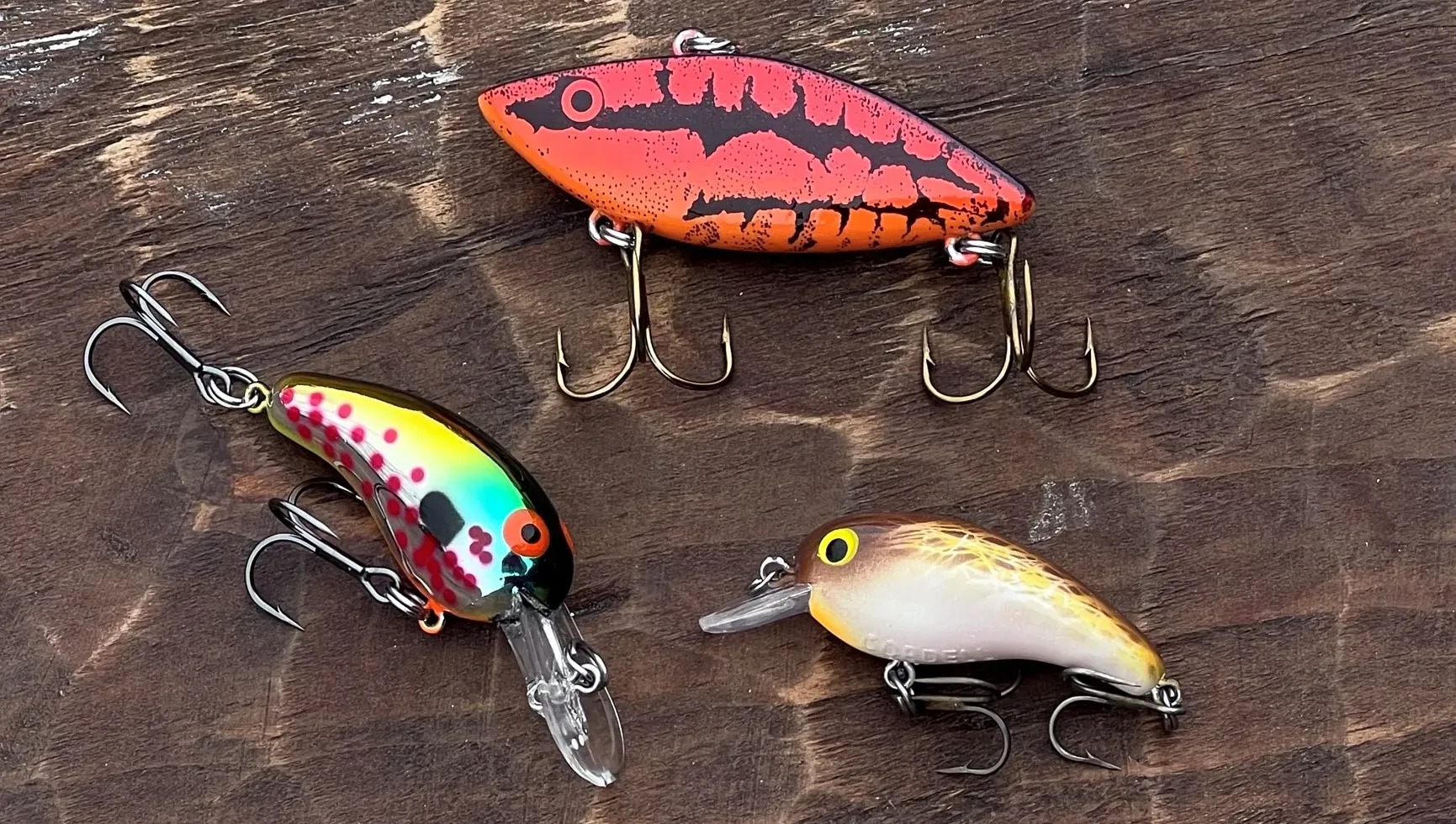
4. Topwater
There is nothing more exciting than a smallmouth exploding on a surface lure.
-
How it Works: Popper lures are worked with a "pop-pause" retrieve to create a disturbance. Buzzbaits are retrieved steadily to create a buzzing sound on the surface.
-
Best Baits: Poppers, walking baits (like a Zara Spook), and buzzbaits.
-
When to Use: Early morning and late evening in the summer and fall, especially on calm days.
Your Seasonal Game Plan: Adapting Year-Round
Adapting to the seasons is a fundamental skill in all forms of bass fishing, and it's especially critical when targeting smallmouth, as their behavior changes dramatically with the weather. Here’s how to adapt.
Spring: The Pre-Spawn Frenzy
-
Where to Look: Shallow, rocky flats and points near spawning areas (2-10 feet deep).
-
Top Lures: Suspending jerkbaits, lipless crankbaits, and tube baits dragged slowly.
-
Pro Tip: This is one of the best times to catch your biggest smallmouth of the year as they feed heavily before the spawn.
Summer: Go Deep and Slow
-
Where to Look: Deeper structures like main lake humps, deep rock piles, and ledges (15-30 feet deep).
-
Top Lures: Drop-shot rigs, football jigs, and deep-diving crankbaits.
-
Pro Tip: Fish early in the morning with topwater lures before the sun gets high and drives the fish deep.
Fall: Aggressive Feeding Time
-
Where to Look: Bass move back into mid-depths (5-15 feet), following schools of baitfish along drop-offs and points.
-
Top Lures: Crankbaits, spinnerbaits, and jerkbaits. Cover lots of water.
-
Pro Tip: Find the baitfish, and you will find the smallmouth. Watch for diving birds or activity on your fish finder.
Winter: The Patient Angler's Game
-
Where to Look: The deepest holes and vertical structures you can find (bluffs, bridge pilings).
-
Top Lures: Drop-shot rigs, float-and-fly technique, or very slow-moving blade baits.
-
Pro Tip: Bites will be incredibly light. Use your most sensitive rod and watch your line carefully for any subtle ticks or jumps.
How to Find Your Own Local Hotspots
Instead of giving you a list of lakes you may never visit, here’s how to become a smallmouth detective in your own area. Of course, if your local area happens to be the Land of 10,000 Lakes, our guide to the best lakes for bass fishing in Minnesota can give you a massive head start. For everyone else, here’s how to use modern tools and a little detective work to find your own honey holes.
1. Look for Rocky Structures: Use Google Maps' satellite view or a Navionics chart to find rocky shorelines, points that extend into the water, and offshore humps.
2. Find Current Breaks: In rivers, any object that breaks the current (a large boulder, a bridge piling, a fallen tree) creates a resting and ambush point. Smallmouth will sit in the slack water just behind the break.
.webp)
3. Use Digital Tools: Apps like Fishbrain can show you where other anglers are logging catches. A quality fish finder (sonar) is your underwater eyes, allowing you to see bottom composition and mark fish.
4. Identify Transitions: Look for areas where the bottom changes, such as from sand to rock, or from shallow to deep. These transition lines are fish highways.
FAQs
Conclusion
Mastering the art of smallmouth fishing is a journey, not a destination. With the strategies and techniques laid out in this guide, you now have the blueprint for success in any season. It’s about more than just having the right lure; it’s about reading the water, understanding the fish's behavior, and adapting your approach. You now understand the core principles of how to fish for smallmouth bass. So take this knowledge, trust your instincts, and get out on the water. The thrill of that next big fight is waiting for you.
Aviv Nguyen is a passionate fisherman who loves sharing stories and tips from his fishing adventures. Whether it’s freshwater or sea, he finds joy in every cast and aims to inspire others to enjoy the great outdoors through fishing.
Share This Post With Friends

